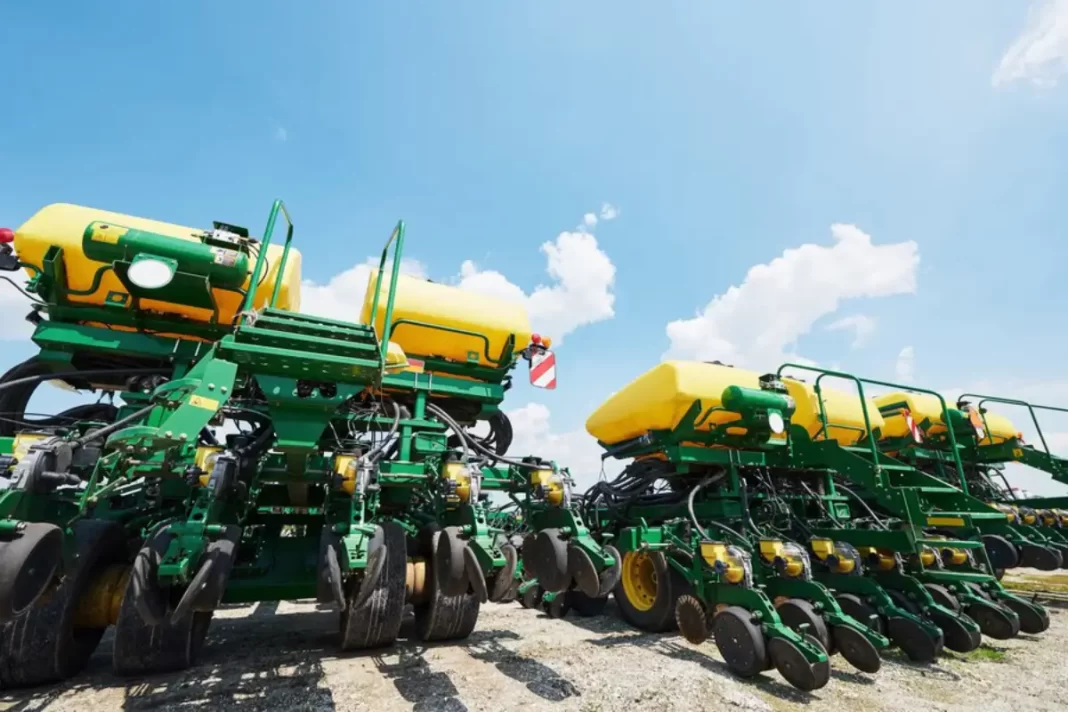Inspecting the machine carefully when buying, especially used equipment, is important. This is even more important when purchasing a used combine. Inspect the cab for damage and comfort. Spending all day in a combine during harvest can be tough, so you must be comfortable. Look for signs of wear on larger belts, chains and sprockets. This could indicate that the previous owner overworked the machine.
Table of Contents
Check the Engine
The engine is one of the most important parts of any machine, and that’s especially true of a combine harvester. Inspect the engine for discoloration or burn marks that indicate overheating, and look under the hood for cracked hydraulic, fuel and cooling lines. Aside from the engine, you should also check for signs of wear and tear throughout the harvesting machinery.
This includes the feeder house and any extensions on the back of the combine. Inspect the sieves and threshing mechanism for damage, as well as the drill and rotor/separator. If the combines for sale is a track model, check the front tires and examine the condition of the tracks. Damaged tracks can cost up to PS4,000 to replace, so this area is worth looking closely at.
If the combine has been a rental, consider the hours it has used. This will give you an idea of how much wear and tear the machine has suffered, though this should be balanced with other factors like maintenance history.
Check the Separator
The separator is a key component of the combine, and it pays to check it over carefully. Look for signs of excessive wear on larger belts, chains and sprockets, as this could indicate poor maintenance or overworking by the previous owner. It’s also worth knowing what crops the machine has cut throughout its life, as some can be harder on a device than others in terms of wearing down its parts. For example, a combine used for cutting a lot of maize could see its components wear out much faster than a wheat cutter.
Check for cracks in the separator’s drum and screen, as these can be expensive to repair. Likewise, ensure the tall crop dividers are straight and in good condition, and check the auger edges for damage. Inspect the chaff screen for excessive wear as well. If the combine is fitted with rubber tires or tracks, inspect the make, size, and quality of the tread and the rims to ensure no cracks or other signs of damage. If it has tracked wheels, ensure the drive sprockets and rollers are in good condition. Also, look at the axles to ensure no signs of stress from being towed.
Check the Tires or Tracks
Combines are one of the largest and most complex machinery an arable farm can invest in. If you spend the money on a second-hand model, it pays to examine it carefully to ensure you get a peach instead of a lemon. Discussing the finer details will go a long way in keeping your used combine running well for years.
Start your inspection by turning the engine on, and if the auction house will allow it, drive forward and backward to check for noises such as grinding or screeching. The sounds of a combine in action can give you insight into how it was cared for by its previous owner and indicate the quality of maintenance done on the machine over the years. Once the engine is turned off, remove the air filter and look at it to determine whether or not it has been replaced regularly.
Also, review the manual and check for recommended replacement times for other parts, such as hydraulic hoses and pumps. If you’re shopping for a used combination with tracks, check the condition of those as well. Replaced ways are expensive, so you want to ensure that the ones on the combine you’re looking at are in good condition.
Check the Undercarriage
When looking at a combine, it is important to inspect the undercarriage. This includes checking the chaffer, sieve, and shoe cavity for debris and looking at the drills to check for general wear. It’s also worth removing the shields to see the condition of the drum drive belt and any signs that it might have seized up – blue-black discoloration on the pulley steel is clear evidence of serious seizure and overheating. Finally, it’s worth getting inside the cab and testing its comfort.
After all, operating a combine for long periods during harvesttime is something other than what you want to do with an uncomfortable seat! Ideally, start the combine and drive it forward and backward to ensure the transmission works correctly. When doing this, take the opportunity to listen for any odd sounds, such as groaning, screeching or knocking. It’s also worth noting if the combine is a straw walker or not and if it has an external, internal, or extra-fine cut chopper. Overall, a good inspection of a used combination can save farmers a lot of money. But as farmers, we must be mindful that purchasing used equipment has unique risks that must be considered. By conducting a thorough inspection, we can ensure that the used combine we buy will be in tip-top condition and meet our needs.



